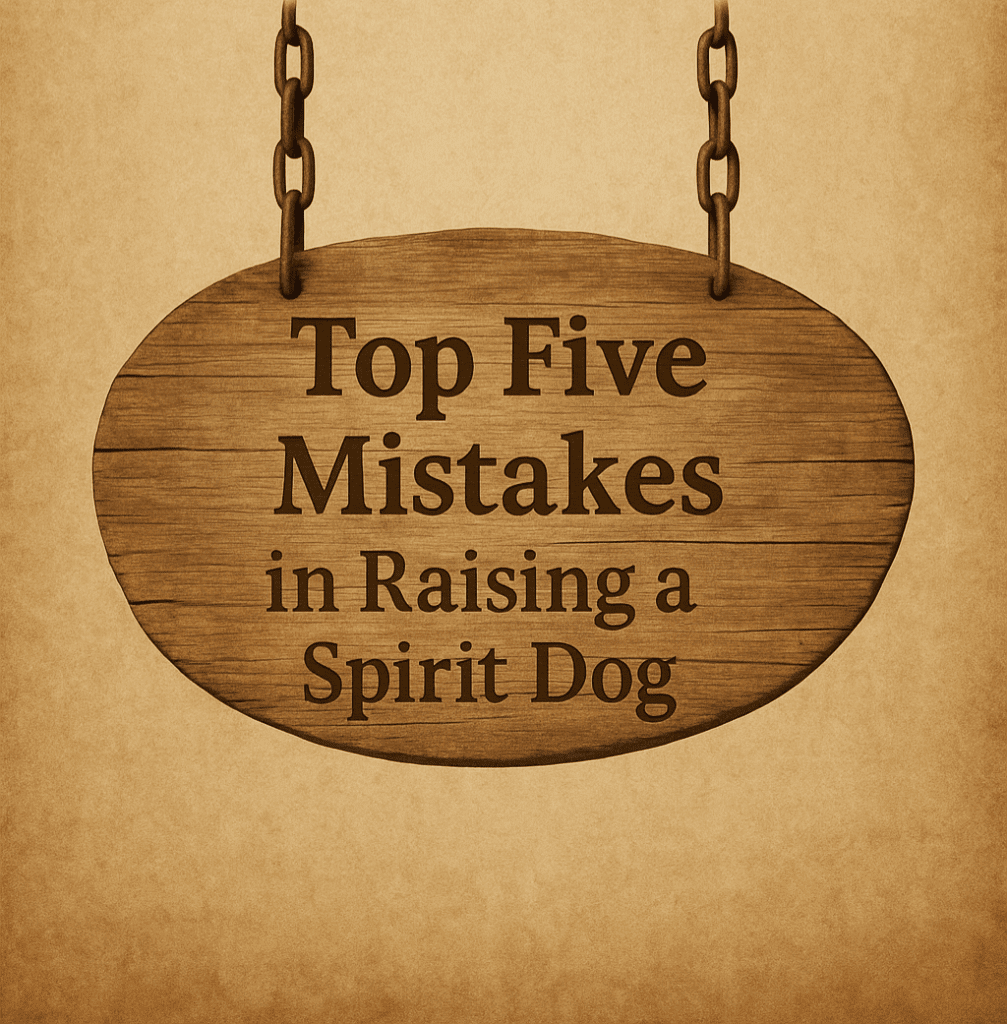The Native American Indian Dog is not a beginner’s breed. These aren’t dogs you train with shortcuts or raise on autopilot. They’re spiritual companions—primitive, perceptive, and powerful in ways that both bless and challenge us.
Over the years, we’ve walked closely with many NAID families, and we’ve seen the same core mistakes show up again and again—not out of neglect, but out of a mismatch between modern dog-raising habits and what this ancient-type dog actually needs.
Here are the five biggest mistakes we see, and how you can avoid them.

1. Over-Socializing Too Early
Modern puppy culture tells us to expose our dogs to everything—loud crowds, strangers, dogs in pet stores, traffic noises—at a young age. But NAIDs aren’t like Labs or Goldens. They’re more like wolves in their early development: cautious, observant, and slow to trust.
Flooding a NAID puppy with too much too soon can actually damage their social confidence instead of building it. You may see fear-based behaviors, reactivity, or shutdown.
What to do instead:
Focus on safe, slow exposure. Let your puppy observe the world from a distance before asking them to interact with it. Focus first on building a deep, trusting bond with you—you are their safe place.
2. Inconsistent Boundaries & Training Mismatches
Because they’re so intelligent and intuitive, NAIDs can confuse inconsistent training as weakness. A lot of owners either come in too harsh (which breaks trust), or too soft (which invites manipulation or confusion).
What to do instead:
Use calm, consistent leadership. Don’t train at them—train with them. NAIDs thrive when they respect their person, not when they fear them. Your tone, timing, and emotional congruence matter more than commands.
3. Feeding Processed Food
A lot of behavioral and health issues we see trace back to kibble—yes, even the “premium” ones. Processed food affects mood, digestion, skin, coat, joints, and brain chemistry.
What to do instead:
Begin to research raw feeding or lightly cooked, whole food diets. Even adding in a few raw elements (eggs, kefir, fresh meat) can start shifting your dog’s vitality. Once you’re on our waitlist, we’ll guide you step-by-step.
4. Misreading Fear or Sensitivity as “Stubbornness”
It’s easy to mislabel a primitive dog’s hesitation or discomfort as disobedience. Many NAIDs will shut down, freeze, avoid eye contact, or retreat if they’re overwhelmed—not because they’re being difficult, but because they’re deeply affected by energy and pressure.
What to do instead:
Learn to read your dog’s emotional language. Offer space, safety, and time when needed. Build confidence through cooperative games and low-pressure challenges.
5. Underestimating the Spiritual & Emotional Connection
These dogs are more than pets. They are medicine. We’ve seen NAIDs pick up on people’s trauma, grief, tension, or depression—and try to hold it for them. Without proper guidance, this can become a burden for the dog.
What to do instead:
Honor the spiritual connection. Meditate with your dog. Let them witness your healing, not absorb it. We teach our puppy families how to raise their dogs with spiritual boundaries and reciprocity.

Raising a Spirit Dog Is Different—And Worth It
If you’re drawn to this breed, there’s probably a reason. These dogs have a way of calling their people. They don’t come to you just to be trained—they come to walk beside you as part of your growth.
At Corn Moon, we don’t just raise puppies—we raise spirit dogs with purpose. And we guide our families every step of the way.

